Cruising the pasta aisle of the local Safeway, you are to be forgiven if you suddenly find yourself lost in what used to be a familiar land of comfort food. Outshining the old spaghetti standby there is chickpea fusilli, red lentil rotini, and brown rice elbow macaroni. There are boxes of pasta made from quinoa and corn, and packages advertising perhaps less familiar grains like einkorn or spelt. All have something in common: they are gluten free. And they are just a handful of products flourishing on supermarket and bakery shelves as part of a $22 billion global market for gluten-free foods.
Books like Wheat Belly and Grain Brain have popularized the view that modern wheat is responsible for a rise in gluten intolerance and related symptoms ranging from abdominal bloating to mental fuzziness, along with more serious illnesses like obesity and diabetes. This popular notion has led to an explosion of gluten-free diets and cookbooks, like The Gut-Friendly Cookbook, The Anti-Inflammation Cookbook, and The Everything Gluten Free & Dairy Free Cookbook. Blogs like Just Gut Science perpetuate this belief, writing in alarmist tones about “the dark side of wheat,” warning the gluten found in wheat “messes up your gut flora, leading to many diseases” and contributes to something scary-sounding called leaky gut syndrome.
Along with the image problem of modern wheat has come a new interest in wheat alternatives, including what are commonly known as ancient grains. These older forms of wheat (and other grains such as teff and fonio that are not the focus here), such as emmer, einkorn, spelt and Kamut, are believed to cause less intestinal inflammation and are therefore to be better tolerated by the growing portion of the population that considers itself gluten intolerant or gluten or wheat sensitive (which are not to be confused with celiac disease, a serious autoimmune disease found in about 1% of the population). Organic growers, local millers, and artisanal bakers are now working with these grains, which are becoming easier for ordinary shoppers to find. And new cookbooks such as Mother Grains and Simply Ancient Grains celebrate the culinary roots of this welcome variety in sweet and savory dishes alike.
Based on current scientific understanding, it is the tastiness, diversity, whole grain goodness and nutritional profile of ancient grains—and not their supposedly winning gluten profile—that should convert eaters.
The popular understanding today is there is something about modern wheat, whether the way its genetic makeup has changed due to hybridization over the centuries, or the way it is grown in chemical-intensive industrial monocultures, that has led to higher levels of gluten, or perhaps different kinds of gluten, than the ancient versions of wheat upon which humanity depended for millennia, seemingly without these stomach problems. Focus has come to rest particularly upon gliadins, a component of gluten that is thought to cause elevated levels of inflammation in the human gut. As Drs. Justin and Elena Sonnenburg summarize in The Good Gut, “[t]oday wheat has an image problem.” While the dietary damage associated with modern industrial agriculture is indisputable, current science absolves wheat of much of its bad reputation. The trouble seems instead to come from the appalling lack of fiber and whole grains in the modern American diet. In fact, several recent studies report that many of the ancient grains actually have higher levels of gluten than modern hybrid wheat.
Research published in journals such as the Journal of Agriculture and Food Chemistry and Cereal Research Communications looked at inflammation among people who do not have celiac disease and found no evidence of “leaky gut” (in which the lining of the intestine thins and weakens, creating gaps between the cells that allow toxins and inflammatory compounds to leak out of the digestive tract) and no conclusive evidence of gluten’s effect on inflammation. For example, a study conducted by the Leibniz Institute of Food Systems Biology at the Technical University of Munich tested the protein content of 60 wheat varieties, both ancient and modern, and found that, in fact, modern varieties had slightly less protein than ancient ones, with substantially lower levels of the inflammation-indicated gliadin component. These studies and others like them point to other dietary developments, such as the prevalence of vital gluten as a cheap protein supplement in packaged food products and the reduced fermentation time during commercial bread-making as more likely culprits. Environmental factors including conventional agronomic practices, such as chemical spraying and grain storage fumigation, may also be implicated, but there is evidence that increased atmospheric carbon dioxide due to climate change is actually lowering protein levels and other nutrients in crops such as wheat, putting global food security at risk.
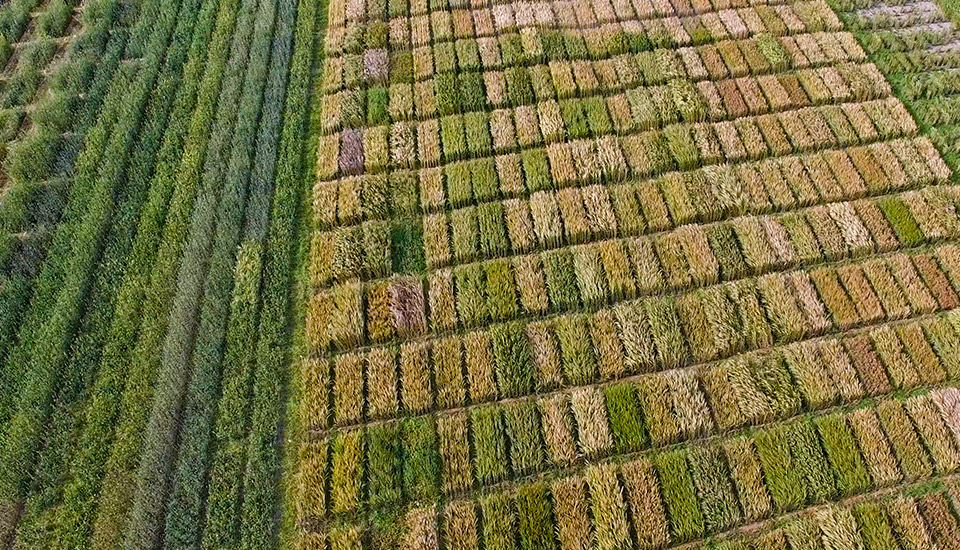
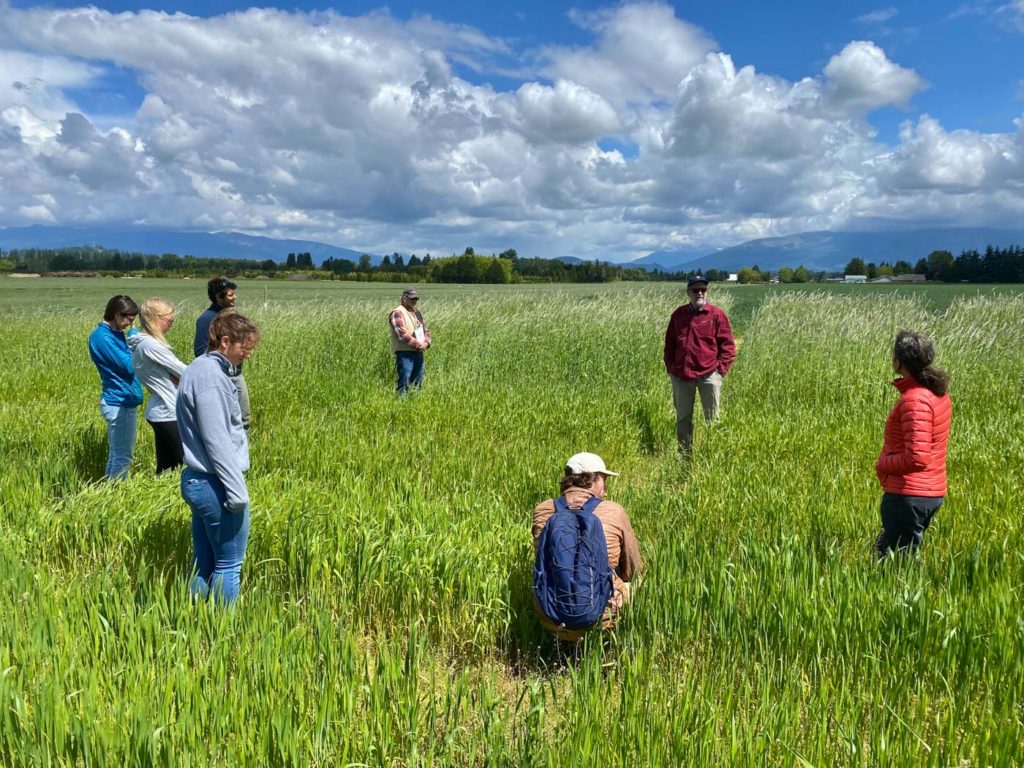
Wheat is the dominant crop globally and a staple food in all temperate countries, providing 20% to 50% of total calories and important amino acids, vitamins, minerals, fiber and phytochemicals. According to the Journal of Cereal Science, wheat was domesticated from wild grasses during the Neolithic period around 10,000 years ago and the earliest varieties were einkorn and emmer wheats. Emmer is known in Italy as farro. Durum wheat, used in pasta, is the modern form of emmer, while modern bread wheat is a hybrid of emmer and another ancient wild grass. Over millennia these crops have undergone selective breeding for desirable traits, such as a free-threshing (or naked) form that increases threshing success and efficiency. The hulled form of bread wheat is known today as spelt.
In a talk in early May during Grains Week, a culinary and scientific conference exploring all things grain-related that is hosted by the Culinary Breeding Network, whose mission is to build communities of plant breeders, seed growers, farmers, produce buyers, chefs and other stakeholders to improve quality in vegetables, fruits and grains, Dr. Andrew Ross, a cereal chemist from Oregon State University, was definitive in his answer to the question: “Is the gluten changing in modern versus old wheats?”
“For me, that argument’s been put to bed,” he says. “There’s no evidence for an increase in the gluten content.” Ross went on to explain the importance of availability of fiber as a “fermentable substrate,” in other words food, for the microbiota of the human gut. While the science is complex, the simple explanation is that fiber improves the gut barrier function and promotes healthy gut microbiota, therefore reducing intestinal inflammation. Ross thinks it is the poor quality of the modern American diet, with its low levels of dietary fiber and consequent diminished ability to feed the microbiota that keep intestinal cells healthy and tightly joined, that creates a “pre-existing leaky gut” that then leads to inflammation and potentially to chronic diseases. This, and not gluten or modern wheat per se, may be the predisposing cause of an increase in sensitivities or allergies to wheat or gluten.
We often think of dietary fiber as something to eat to keep us regular, but new research deepens the understanding that fiber is an essential prebiotic—food for the gut microbiota that fuels their own survival and keeps the intestinal walls healthy. As the Sonnenburgs write, “[i]ncreasing dietary fiber is essential to cultivating diversity in the microbiota. Microbes in the gut thrive on the complex carbohydrates that dietary fiber is primarily composed of. These complex carbohydrates are vastly different from the appropriately vilified simple carbohydrates found in starchy food and sodas.” The method microbiota uses to “eat” or digest fiber is anaerobic metabolism, otherwise known as fermentation.
Fermentation is familiar to any bread baker, but thinking about it as a process akin to the digestion of food by bacteria in the human gut might be new to many. Yet as Dr. Stephen Jones, founder of Breadlab at Washington State University explains, “fermentation is digestion. It’s organisms breaking things down.” Breadlab exists to change the way people view and eat wheat by breeding new varieties of wheat, rye and barley that are better for the soil, taste great, and are better for people. While Jones has a Ph.D. in molecular cytogenetics, he describes his role more mundanely: “We are wheat breeders that bake.”
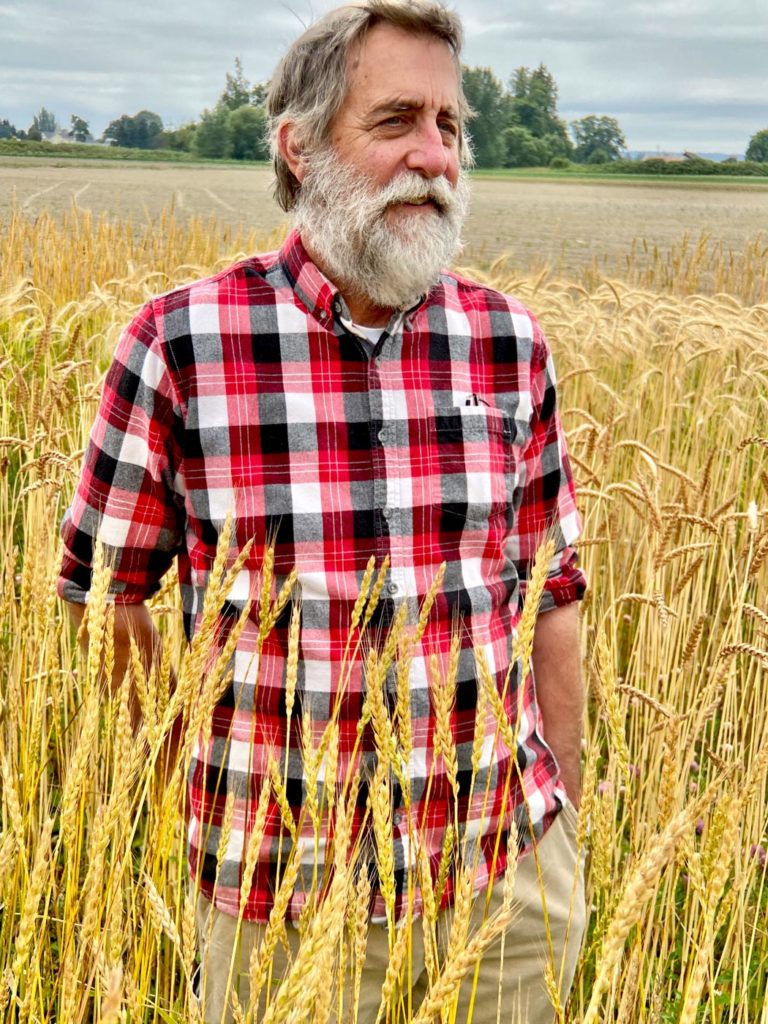
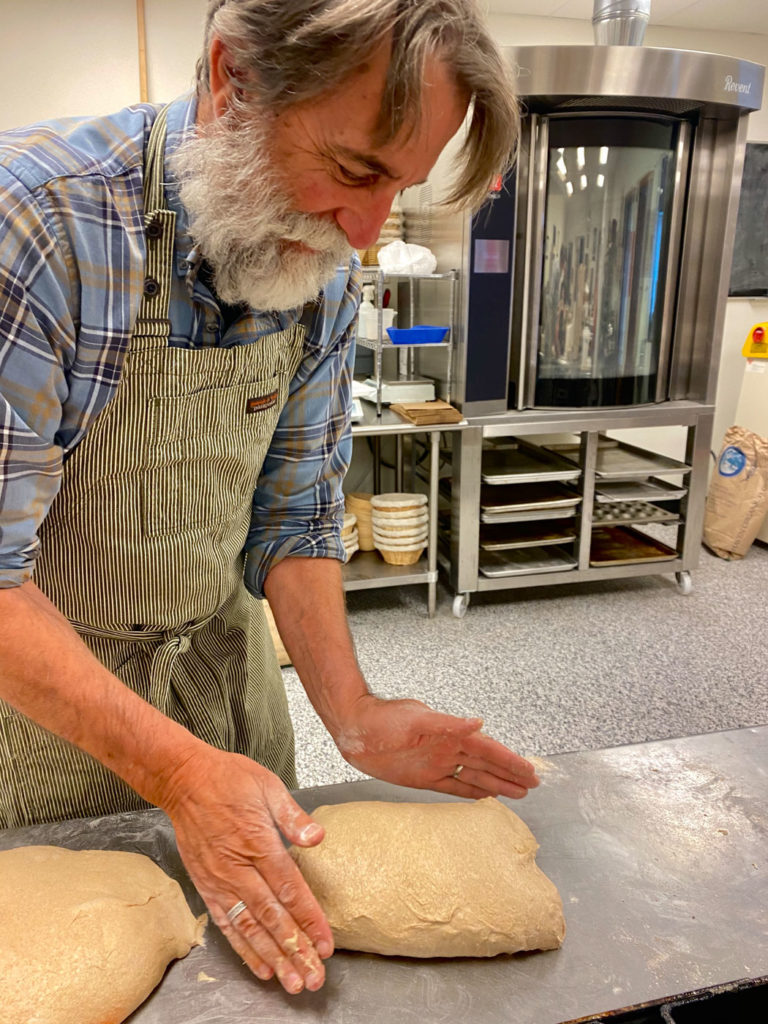
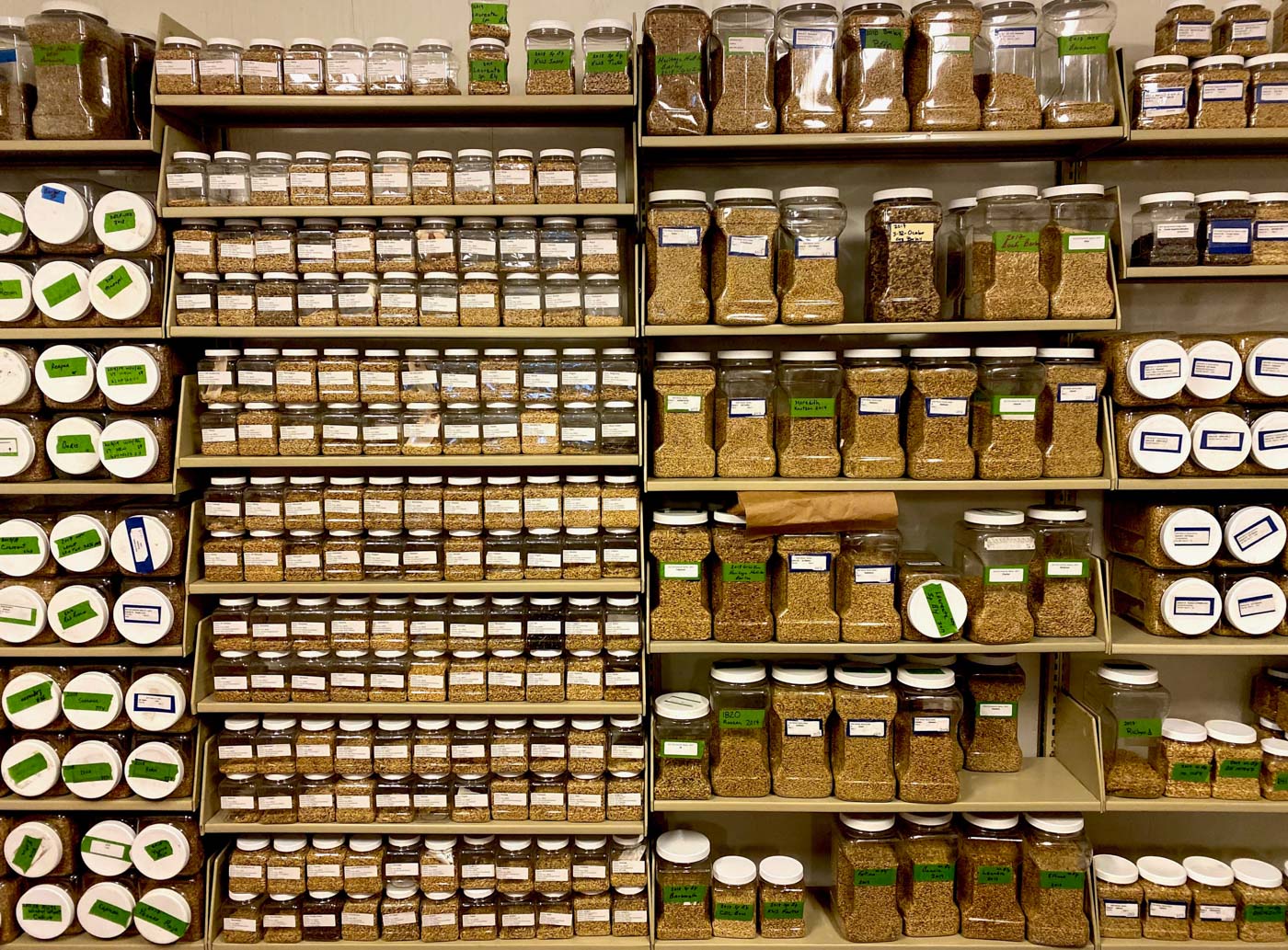
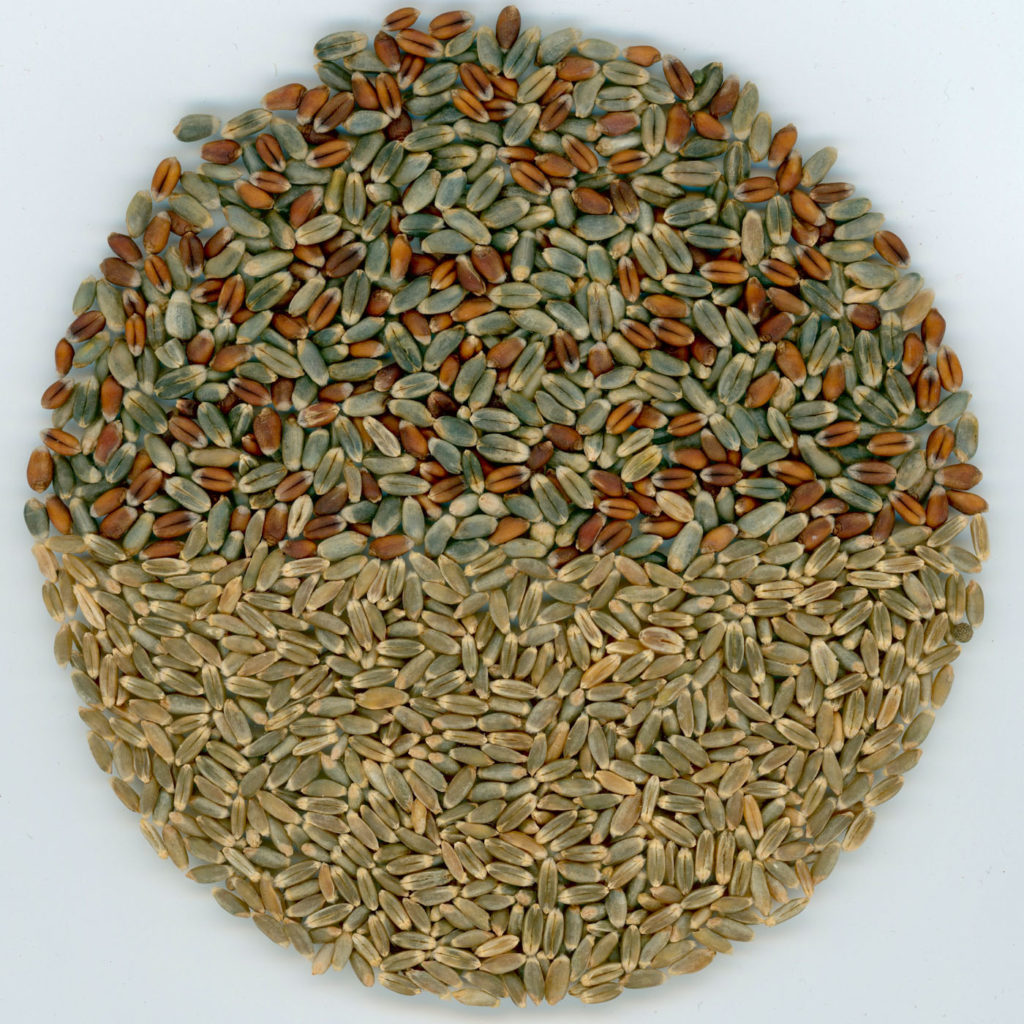
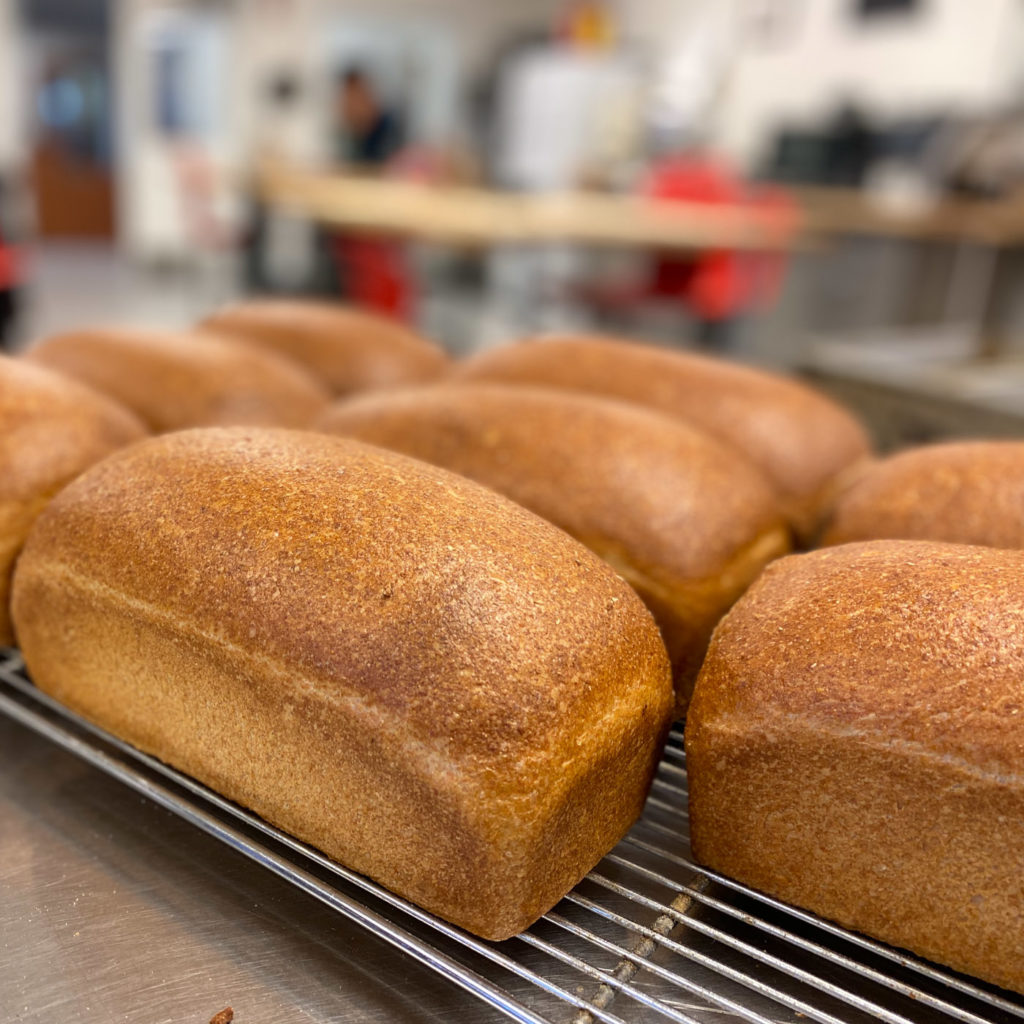
“The wheat seed does not want to be made into a baguette. It doesn’t want to be milled. It wants to become a plant,” he continues. “Glutenin and gliadin (the components of gluten) are storing amino acids. Starch is storing energy. Phytate in the bran and germ is an antioxidant that grabs iron and zinc and stores them.” Seed germination, fermentation and digestion all achieve something similar: the breaking down of these plant components to make nutrients available.
When asked about the supposed link between wheat and gluten intolerance, Jones, like Ross says, “a lot of this gluten intolerance is lack of fermentation as well as lack of fiber. If you want to eat bread and you’re not celiac, eat whole grain, eat organic, and eat a long fermentation.”
Fermentation time seems especially important, giving space to yeast and bacteria to do their work. Researchers David Suter and Ferenc Békés in their recent article in Cereal Research Communications, “Who is to blame for the increasing prevalence of dietary sensitivity to wheat,” call out the reduction in fermentation time in typical commercial bread-making operations as a possible instigator of inflammatory problems. Since wheat flour naturally contains high levels of gliadins and other gluten components, commercial breads made with a very short proofing time maintain those same high levels. Comparing these breads to long-fermented doughs, more common among artisanal bakers, shows as much as a 90% reduction in gluten content in both yeast doughs and sourdoughs.
Sourdoughs are especially notable; sourdough starter is essentially a community of bacteria like those in our gut that start breaking down or pre-digesting the flour before we even eat it. Jones highlights the benefits of sourdough over yeasted bread, saying “a yeasted bread is a big bang. Commercial yeasts are supercharged and go to work quickly. Bacteria is important, they lower the pH, and phytases (which make phosphorus bioavailable) work better at low pH.” By lowering the pH, or making the dough more acidic, a true sourdough flavor develops. Jones concludes, “any way you can add time to our foods, it’s an advantage.
Roxana Jullapat, renowned baker, founder of Friends & Family in Los Angeles, and author of Mother Grains: Recipes for the Grain Revolution, wrote her book as a kind of journal, documenting the process of converting recipes she had made for years into whole grain versions of themselves. As artisanal whole grains gained momentum and local mills started to spring up, she had what she calls an awakening, finding that these highly nutritious, comparatively climate-friendly flours were suddenly accessible to chefs like her as well as home cooks and bakers.
For Jullapat, ancient grains have a cultural, genetic and historical richness, which is at risk of being forgotten in a world of modern, hybridized wheat. As she explains, “grains are an ecosystem.” By which she means not just a biological system, but an interdependence among the farmers who grow grains sustainably, the careful process of drying and cleaning them, the artisanal miller who takes care not to overheat the flour as it goes through a stone or hammer mill, the great cooks and bakers who handle the final product, and the consumers who devour them.
Jullapat’s book features eight “mother grains,” and each section of the book features a short description of the grain’s history, nutritional profile, and use as whole berries, flour or other forms such as groats, followed by enticing recipes for both sweet and savory preparations. For example, einkorn is high not only in protein and fiber, but also in iron, thiamine, B vitamins, and the antioxidant lutein. Jullapat offers a recipe for einkorn shortbreads inspired by her grandmother Yenita’s butter cookies. Spelt, high in iron and manganese, is Jullapat’s “gateway” grain since it behaves similarly to other wheat flours and is her go-to for all-purpose flour. Jullapat’s recipe for classic blueberry muffins with streusel introduces that grain’s sweet and nutty tones to a beloved favorite.
For bakers new to working with whole, artisanal, ancient grains, Jullapat suggests approaching them with a beginner’s mind. “Be curious about what they bring to a recipe,” she says. “They are tactile—how do they feel on the tongue? What texture do they have, what flavor, aroma?” Among her learnings in adapting recipes typically made with conventional industrial flour, Jullapat suggests being generous with hydration and perhaps using slightly less flour than called for in the original recipe. “These flours are robust and fresh. They are thirsty. Be generous with fats—butter, egg yolks, even coconut oil. That way the bran gets lubricated.”
Because these grains are assertive in flavor, Jullapat thinks carefully about pairings. She finds that some artisanal wheats taste almost cheesy when combined with butter; whereas others, such as sorghum, are mild in flavor, so she suggests using herbs and spices with abandon. In their nuance and variability, Jullapat sees these crops as produce. “These grains have a very seasonal voice,” she explains.
Someone who understands seasonality deeply is Bob Quinn, who began growing Kamut on the windy, hail-prone plains of Montana 30 years ago. Quinn is an organic pioneer in the state, the founder of a successful heirloom-grain company, Kamut International, and the author with food scholar Liz Carlisle of the recent book, Grain by Grain: A Quest To Revive Ancient Wheat, Rural Jobs, and Healthy Food, which tells the story of his journey from conventional farmer to sustainability entrepreneur, by way of a Ph.D. in plant biochemistry. Kamut is the name Quinn trademarked to market and protect this ancient variety of Khorasan wheat, a close relative of durum. Quinn explains that the trademark is not meant to restrict ownership of the crop, but rather to guarantee quality and farming practice—it is always grown organically.
Farm practices matter to Quinn, whose farm has been regenerative organic from the start, mediating climate change and reducing soil and air pollutants. He uses green manure grown on-farm, rotates in legumes, and uses no pesticides or herbicides, all in an effort to nourish the soil and the microbes within it who feed and take care of the crops he grows. Quinn sees this symbiosis as essential to the quality of the crop he produces, and attributes to these practices the nutrient richness of his Kamut, such as higher levels of selenium and polyphenols (micronutrients that act as antioxidants). In Quinn’s view, good seed plus good soil plus good people equals good food. And soil microbes are just as important in this equation as our gut microbes.
When asked about the growth of interest in ancient grains like his, Quinn points first to the wariness people increasingly feel about industrialized food. But then he highlights the delight eaters experience when they encounter the flavors and aromas of grains like his, people who “didn’t know food could taste like that.” Quinn’s favorite ways to eat Kamut include a corn nut-like roasted wheat snack, as a porridge-like hot cereal together with barley, in sourdough pancakes, and as pasta (in the U.S., Kamut pasta is made by Eden Foods). In her book, Jullapat offers a savory Turkish-inspired recipe featuring Kamut with cherry tomatoes, cucumbers and fresh herbs.
With such delicious and culinarily interesting alternatives to refined white flour abounding on supermarket shelves, sourced from local small-scale farmers and millers, or bought from artisanal bakeries, it is now possible to enjoy whole-grain nutrition and fiber in everything from pasta to pancakes without having to resort to scientifically dubious arguments about gluten and inflammation to justify these delights.
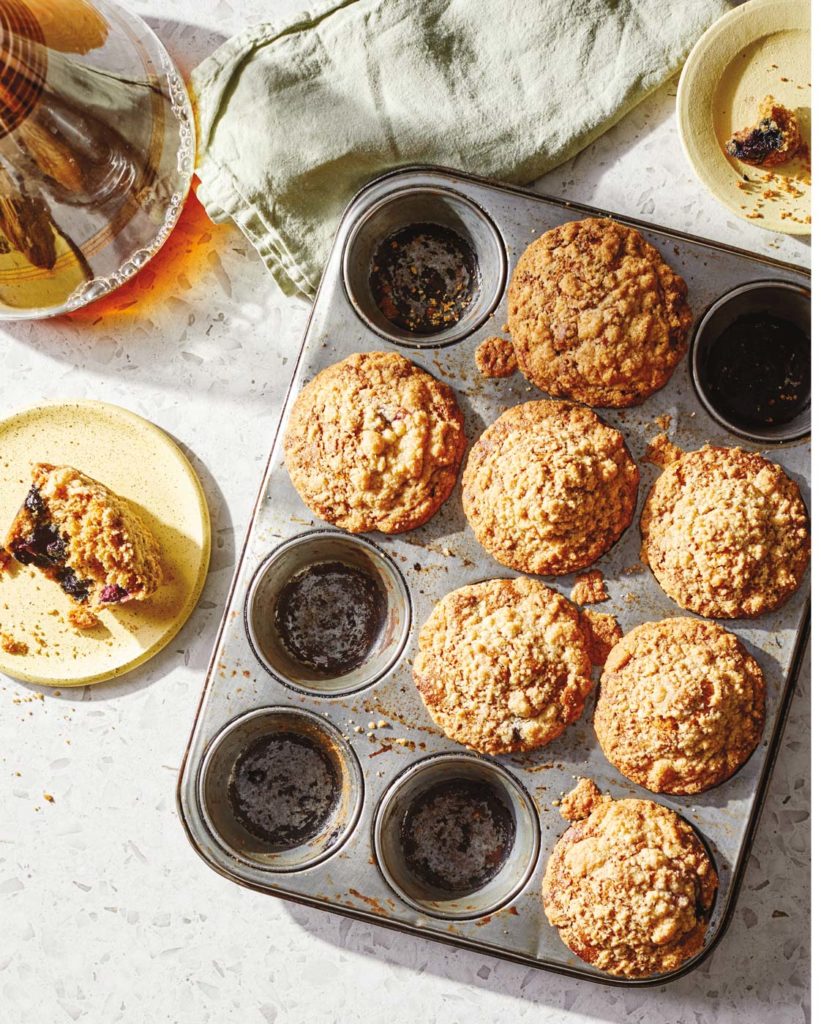
Spelt Blueberry Muffins
Recipe by Roxana Jullapat
Photo by Kristin Teig
Reprinted from Mother Grains: Recipes for the Grain Revolution. Copyright © 2021 by Roxana Jullapat. With permission of the publisher, W. W. Norton & Company, Inc. All rights reserved.
It’s time to give the classic blueberry muffin a makeover, swapping out all the refined white flour for whole-grain spelt. If you haven’t baked with spelt before, you’re in for a pleasant surprise. It performs similarly to wheat flour and can be used as a one-to-one substitute in most recipes, making it easy to improvise and update your tried-and-true favorites. Spelt will introduce sweet and nutty notes to your recipes along with an impressive list of health benefits including greater circulation, stronger bones, improved immune system, lower bad-cholesterol levels, and better digestive functions.
We’ve baked a few dozen of these streusel-topped blueberry muffins every morning since the bakery opened. The recipe calls for frozen blueberries, which prevents the fruit from getting smashed while mixing the batter, but you can certainly use fresh berries—just be sure to fold in the fruit gently. Don’t omit the spelt streusel topping. It adds delicious crunch to your muffins and helps keep them moist longer.
Makes: 8 muffins
Equipment: Muffin tin
For the spelt streusel:
- 3 tbsp. spelt flour
- 2 tbsp. granulated sugar
- 2 tsp. packed dark brown sugar
- Pinch of ground cinnamon
- 2 tbsp. cold unsalted butter, cut into ½-inch cubes
For the muffin batter:
- 1½ cups (195 g.) spelt flour
- ½ tsp. baking soda
- 1 tsp. baking powder
- ¼ tsp. ground cinnamon
- ¼ tsp. kosher salt
- ⅔ cup packed (150 g.) dark brown sugar
- ⅓ cup (80 ml.) vegetable oil
- 1 large egg
- ⅓ cup (80 ml.) buttermilk
- Finely grated zest of 1 lemon
- ½ cup (85 g.) frozen blueberries (see headnote)
Method:
Place an oven rack in the middle position and preheat the oven to 350℉.
For the streusel, combine the spelt flour, sugars, and cinnamon in a medium bowl. Toss the cold butter cubes in the dry ingredients. Quickly cut the butter into the dry ingredients by pinching the butter cubes with your fingertips until the mixture resembles a coarse meal with pieces the size of a pea. Refrigerate the streusel until ready to use.
For the muffins, sift the spelt flour, baking soda, baking powder, cinnamon and salt into a small bowl. Make a well in the center with your hands. Whisk the brown sugar, oil, egg, buttermilk and lemon zest together in a separate bowl. Pour the liquid mixture into the well in the dry ingredients. Whisk to combine. Using a rubber spatula, gently fold in the blueberries.
Evenly distribute the muffin batter into 8 muffin cups, filling each cup with about ¼ cup (60 ml.) of batter. Top each muffin with approximately 1 tablespoon of streusel. Bake for 12 minutes. Then rotate the tin and bake for 12 minutes more, until the muffins turn a rich golden brown and a toothpick inserted in the center of a muffin comes out clean. Rotating the tin halfway through the baking process will ensure that the muffins bake evenly. Let the muffins cool in the tin for at least 20 minutes before transferring them to a wire rack to cool completely. The muffins will keep in an airtight container at room temperature for 2 days.





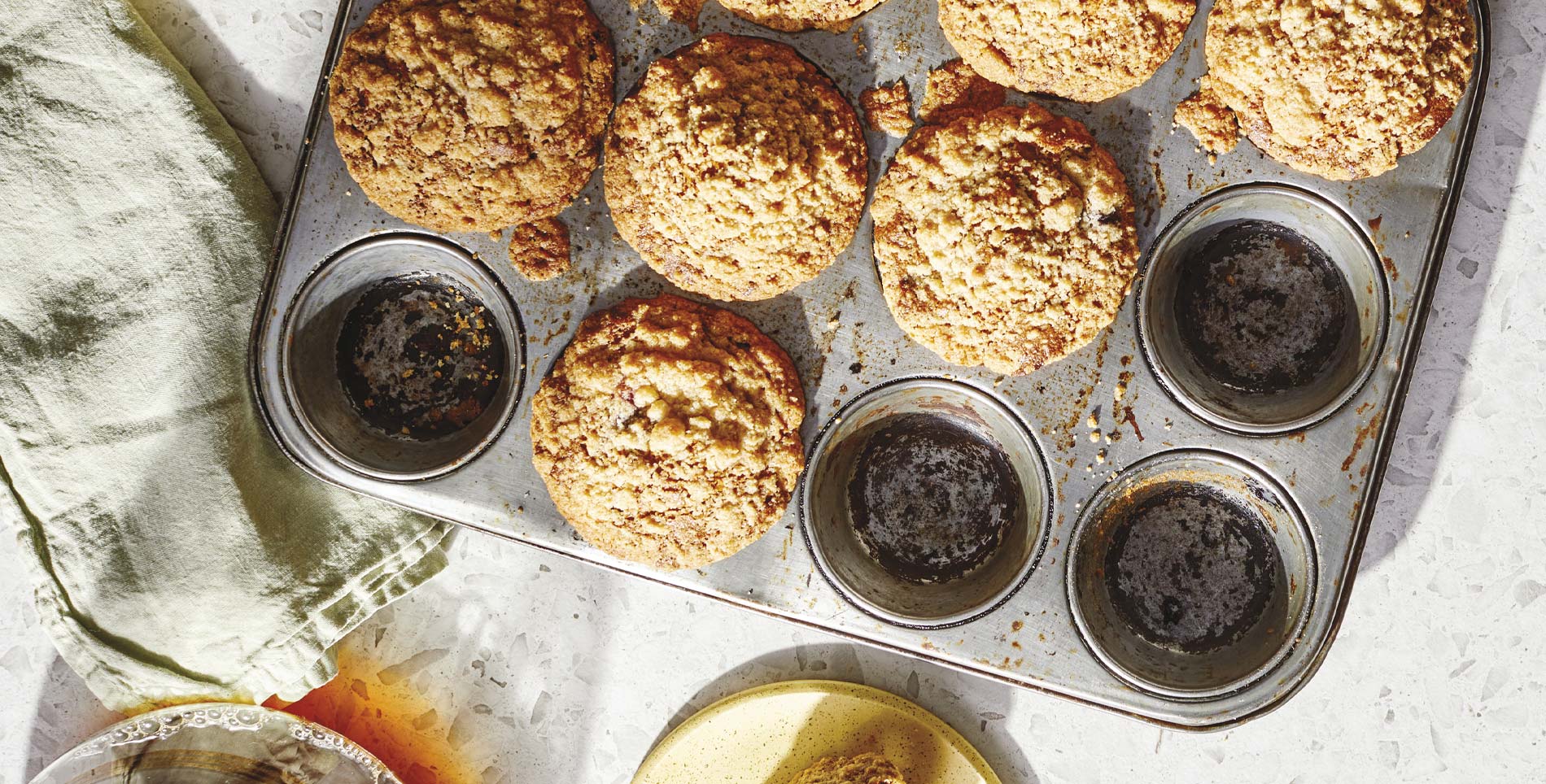

Our comments section is for members only.
Join today to gain exclusive access.